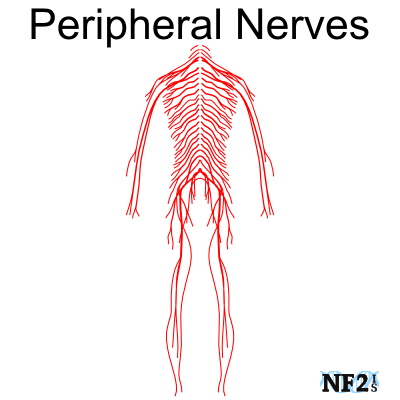
Peripheral Nervous System (PNS) All nerves that are not encased in bones, everything but the spinal cord. Divided into 2 categories, Somatic and Automatic.

Somatic Nervous system controls voluntary movement.
Autonomic Nervous system controls automatic functions of the body. Divided into 2 categories, Sympathetic and Parasympathetic.
Sympathetic Nervous System is the Fight or Flight response accelerates heart beating (ect)
Parasympathetic Nervous System automatically slows the body down after a stressful event. Heart rate and breathing slow down pupils constrict and digestion speeds up.
Reflexes (neurons) Normally sensory neurons take into up through spine to the brain.
Lesions, cuts made to the brain to look for change.
Brain Structures
Hindbrain- medulla oblongata, controls heart rate, blood pressure. Pons, connect hindbrain, mid and forebrain together, controls facial expressions, the cerebellum, located int he back of the head, called the "little brain", coordinates muscle movement.
Midbrain- Coordinates simple movements with sensory information, contains reticular formation, controls arousal and ability to focus.
Forebrain- Thalamus recieves sensory information and sends them to appropriate areas of forebrain. The Thalamus is like a scoreboard.
Limbic System, controls emotions, made up of hypothalamus, the hypothalamus is pea sized but plays an important role, controls body temperature, hunger, set body temperature.
Hyppocampus- processes memories
Amygadala- linked to both fear responses and pleasure.
Cerebral Cortex is the top layer of the brain, contains wrinkles called fissures. Fissures increase surface size of the brain. laid out it would be about the size of a pizza.
Hemispheres
Divided into a left and right side hemisphere. The left side of the brain controls the right side of the body and vice versa. Lefties are logical, right are artistic.
The corpus callosum attaches the 2 hemispheres of the cerebral cortex.
The Cerebral cortex is made up of 4 lobes
The Frontal lobe controls thought, movement, emotion, the motor cortex sends signals to the body controlling muscle movements. Brocas area is responsible for controlling muscles that produce speech.
Parietial lobe contains sensory cortex, receives incoming touch sensations from the rest of the body, made up of association areas. Information and coordinating muscle movements.
Occipital lobe deals with vision, contains visual cortex, interprets messages from our eyes into images we can understand.
Temporal lobe processes sounds sensed by our ears, contains Wernike's Area, interprets written and spoken speech.
Forebrain- Thalamus recieves sensory information and sends them to appropriate areas of forebrain. The Thalamus is like a scoreboard.
Limbic System, controls emotions, made up of hypothalamus, the hypothalamus is pea sized but plays an important role, controls body temperature, hunger, set body temperature.
Hyppocampus- processes memories
Amygadala- linked to both fear responses and pleasure.
Cerebral Cortex is the top layer of the brain, contains wrinkles called fissures. Fissures increase surface size of the brain. laid out it would be about the size of a pizza.
Hemispheres
Divided into a left and right side hemisphere. The left side of the brain controls the right side of the body and vice versa. Lefties are logical, right are artistic.
The corpus callosum attaches the 2 hemispheres of the cerebral cortex.
The Cerebral cortex is made up of 4 lobes
The Frontal lobe controls thought, movement, emotion, the motor cortex sends signals to the body controlling muscle movements. Brocas area is responsible for controlling muscles that produce speech.
Parietial lobe contains sensory cortex, receives incoming touch sensations from the rest of the body, made up of association areas. Information and coordinating muscle movements.
Occipital lobe deals with vision, contains visual cortex, interprets messages from our eyes into images we can understand.
Temporal lobe processes sounds sensed by our ears, contains Wernike's Area, interprets written and spoken speech.
I think it's so cool how with the temporal lobe, sound for each ear is processed through opposite ends of the ears.
ReplyDelete